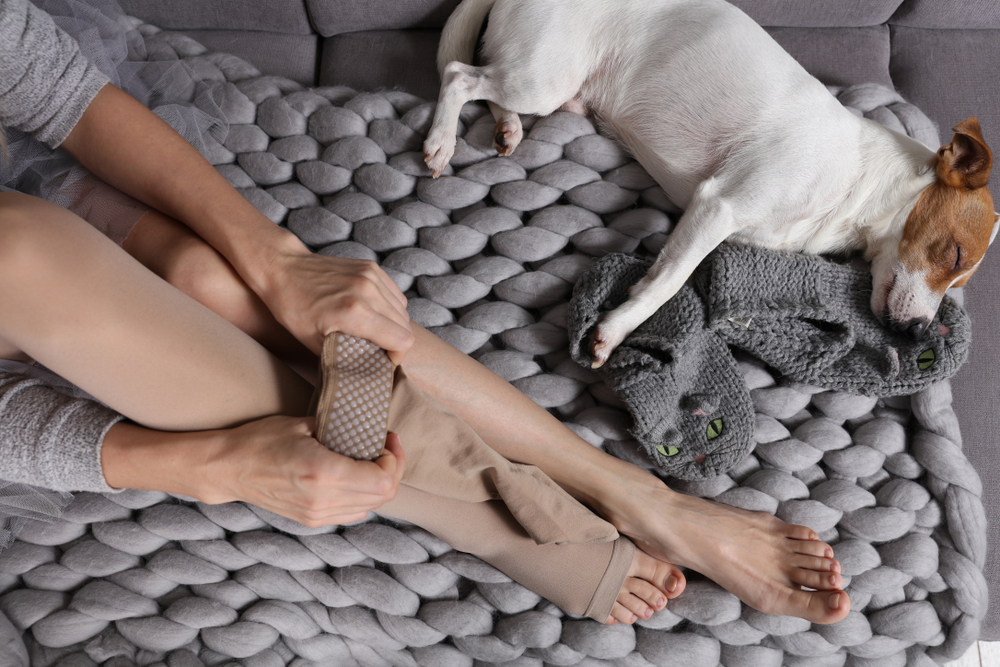Are you considering undergoing vein treatments but unsure about the best time to do it? Winter might just be the perfect season for you.
If you checked out our last blog post, you know cold weather can positively affect vein health.
Cold weather causes veins to shrink, which reduces their size and improves blood flow.
Healthy veins ensure that blood flows efficiently throughout the body, supplying oxygen and nutrients to each organ.
However, when veins become damaged, they can lead to several complications, like varicose veins, spider veins, and chronic venous insufficiency.
These issues can cause discomfort and pain, leading to more severe health concerns. That’s why taking care of your veins and seeking treatment when necessary is essential.
Winter is an ideal time to address vein health concerns and undergo treatments since the colder months provide several benefits that can aid recovery and ensure optimal results.
In this blog, we’ll discuss the various vein treatment options available and why winter is the best time to undergo them.
5 Benefits of Winter Vein Treatments
Let’s explore some benefits of choosing winter for your vein care.
-
Hide Bruising
One of the main reasons why you might prefer undergoing vein treatments in winter is that you can easily hide any post-treatment bruising.
No one likes to showcase their bruises to the world, especially their legs. During the summertime, it can be challenging to style confidently without worrying about others noticing the discoloration.
However, winter clothing provides excellent coverage, allowing you to wear long sleeves and pants to conceal post-treatment discoloration.
This way, you can comfortably go about your day-to-day activities without feeling self-conscious about your appearance.
-
Easier to Wear Compression Gear
Compression stockings play a vital role in the healing process after vein treatments. They help improve blood circulation and reduce swelling and discomfort.
However, wearing compression stockings can be quite uncomfortable during warmer months.
The added heat and humidity make it difficult to wear them for extended periods.
In winter, however, wearing compression stockings is much more comfortable.
You can easily wear them under your clothes without feeling overheated or uncomfortable.
This makes it easier for patients to stick to their compression routine without hassle.
-
Reduced Swelling
If you’ve undergone treatments like sclerotherapy, you especially benefit from a winter procedure, which involves the injection of a solution into the veins to close them.
During the winter, the cold weather can help reduce any discomfort or swelling associated with the treatment, making your recovery process much more comfortable.
This makes it easier to stick to your compression routine without hassle.
-
Less Sun Exposure
During the wintertime, avoiding extended periods in the sun is much easier for you. Too much sun exposure to your treatment area can cause discomfort and irritation.
Certain treatments like sclerotherapy can also raise your sun sensitivity. Patients undergoing vein treatments in winter can avoid too much sun exposure, which can help speed up the healing process.
This way, you can enjoy your results without any discomfort or complications.
-
Enjoy Your Results by Summer
Undergoing vein treatments in winter allows for plenty of healing time for your treatments.
You’ll be enjoying your results by the time warmer weather arrives. This is especially beneficial for people who want to show off their legs during summer.
Patients can enjoy the full benefits of their vein treatments without any restrictions by ensuring that the recovery process is complete before summer.
This way, you can confidently wear your shorts, skirts, and dresses without worrying about post-treatment discomfort or discoloration.
Below are a few surgical and non-invasive vein treatments to look into this winter.
Vein Treatments
Whether you are looking to improve the appearance of your legs or seeking relief from symptoms such as pain, swelling, and fatigue, there are a range of treatment options available to help you achieve your desired outcome.
From non-invasive treatments such as sclerotherapy and laser therapy to more invasive options like endovenous laser ablation, each treatment offers its own unique benefits and considerations.
By learning more about your options and consulting with a qualified vein specialist, you can make an informed decision about which treatment is right for you.
Below, we will provide an overview of a few vein treatments available today, so you can compare and contrast them based on your individual needs and preferences.
Ambulatory Phlebectomy
If you have small varicose veins, you might want to consider an Ambulatory phlebectomy.
This minimally invasive surgical procedure removes small varicose veins through tiny incisions.
These small incisions provide access to your veins, allowing your doctor to disrupt and remove specific vein segments. Laser Ablation Another minimally invasive option is Laser ablation.
This procedure closes off problematic veins, causing enlarged varicose veins.
It stops blood flow, but blood can flow through healthy veins after the treatment, which causes varicose veins to disappear over time.
RadioFrequency Ablation
You can also opt for Radiofrequency ablation, a minimally invasive procedure that addresses venous issues using radiofrequency waves.
During this quick procedure, a local anesthetic is inserted into the affected vein, and a radiofrequency fiber then closes the vein.
The procedure is highly successful and offers several benefits for patients, including immediate pain relief.
You can also expect noticeable cosmetic improvement within a couple of weeks.
Sclerotherapy
Sclerotherapy is a non-invasive treatment for varicose and spider veins.
During the procedure, a saline solution is injected into the diseased blood vessels, causing the vein wall to collapse and eventually fade away. Depending on your needs, sclerotherapy treatments could involve multiple injections.
Varithena®
Varithena® is a form of sclerotherapy using a foam injection that fills a diseased vein segment. The injection causes the vein to collapse, dispersing blood through nearby healthy veins.
The foam is injected into the affected vein during the procedure, causing it to collapse and seal shut. The main difference between sclerotherapy treatments and Varithena® is the type of veins treated.
It is common for sclerotherapy to be used on smaller varicose veins, while Varithena® is used to treat the greater saphenous vein (GSV) and small saphenous vein (SSV).
VenaSeal™ Closure System
The VenaSeal™ Closure System is a minimally invasive procedure that uses medical adhesive applied along the vein wall.
Once the adhesive is applied, it gets exposed to blood and solidifies. During this procedure, the vein is compressed for specific intervals and gently closes, allowing quicker recovery than sclerotherapy.
Venous Ulcer Treatment
If you have venous ulcers, you might want to consider specialized treatment that addresses an underlying venous issue and ensures proper wound care at home through compression wear.
With venous issues, it’s best to be proactive with at-home treatments.
More aggressive treatments may be needed when venous ulcers appear through skin grafts or dressings.
Vein Treatments at Vein Centre
By choosing wintertime for vein treatments, you can enjoy faster healing times, reduced pain and discomfort, and the opportunity to hide any post-treatment bruising.
If you’re experiencing any vein-related issues or concerns, don’t hesitate to contact The Vein Centre.
Our expert board-certified vascular surgeons with over 70 years of combined experience are here to help you.
We have several locations across Nashville, Franklin, and Mt. Juliet, making the best vein care available near you.
Contact us today to schedule your next appointment.
Don’t let vein issues go untreated and affect your quality of life. Let us provide you with the care and treatment you need to feel your best.



